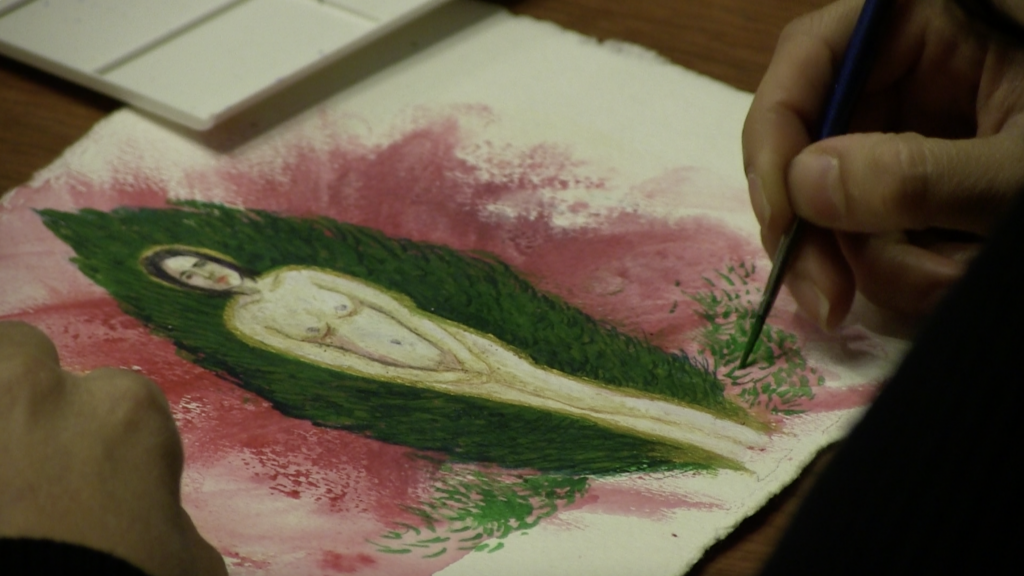Concordia’s Iranian community shows us how art-making can help heal past trauma
Whether it’s venting, crying or spending time with your loved ones, grief differs from person to person. Poetry, storytelling and painting are forms of art therapy healing that took place on Jan. 16 at Concordia’s Art Hive event in efforts to heal together rather than apart.
In light of the recent plane crash that occurred in Iran, Concordia is offering support resources for students that have been affected by the tragedy. Programs like Concordia’s Art Hive, located at the Sir George Williams Campus, are there for students who feel mournful and need a creative outlet.
Hanieh Tohidi, a Creative Art Therapy graduate student at Concordia, created the Persian Art Hive event out of a necessity to do so for her fellow Iranians.
“I felt a lot of sadness and grief coming from Iranian people and felt that I needed to start this event,” she said. After receiving an award provided by the J.A. De Sève Foundation to finance the Art Hive at Concordia’s downtown campus, Tohidi was finally able to make her vision a reality.
The idea started a year ago when sanctions began in Iran and tensions started rising. “The plan was to start the Art Hive much later, but unfortunately this tragedy happened,” she said. “We started the hive under pressure, knowing that the community would need more support; especially students starting their semester.”
Najmeh Khalili-Mahani, a scientist at Concordia’s PERFORM Centre and affiliate assistant professor in the Department of Electrical and Computer Engineering as well as Design and Computation Arts, joined the effort to create the downtown Art Hive. She felt a lack of culturally-specific support for Iranian students. “I thought the magnitude of the event is something that would not be appreciated unless somebody understood the cultural and political context from which we had fled to Canada,” she said.
Art therapy allows people to express their emotions and complex feelings without having to verbalize them. “It is very hard to communicate decades of trauma happening to us to someone who may not necessarily know the background of it,” Tohidi said. “We would have to explain to psychotherapists or councillors why we are getting triggered by specific events.”
People tend to respond to the sense of community that is formed through art and simply being together, according to Tohidi. Since language may not be everyone’s favourite means of self-expression, art therapy introduces a number of creative outlets to allow for free art-making such as music therapy and drama therapy.
Art therapy is highly regarded as a method of coping with bottled-up emotions. Everyone is welcome to let their emotions come together to create a piece of art.
According to Tohidi, the practice of art therapy predates traditional psychotherapy by several thousands of years. Before there was language, there was art. “People would paint on the walls of caves to express their fear of facing hatred from the unknown,” said Tohidi. “That was the sort of therapy that they resorted to. Art was there to allow them to communicate.”
A 2015 scientific study suggests that art therapy can be beneficial in treating issues such as depression, anxiety, low mood, inability to cope, low-self esteem, post-traumatic stress disorder and even some phobias.
Coping with grief through art, poetry and storytelling is very much a part of Iranian culture. “The idea of healing together comes from the psychology of liberation, which is what art hive is based on,” said Tohidi.
“The idea of artist doesn’t exist in art therapy,” she said. “We are all artists.”
The concept of art therapy gives weight to the personal process of artistic creation. Rather than being a result-driven artistic endeavour, Tohidi wants people engaging in art therapy to forget about the outcome of their art. “Art therapy is a re-learning of being in the present moment and observing what we are doing and how we interact with people,” she said.
Most importantly, the Art Hive is a safe space. “If we are non-judgmental, we can have conversations about our art and our inside world,” Tohidi said.
As beneficial as art therapy may be, Tohidi points out that it is hard to come by nowadays due to financial limitations. “The public population can’t benefit from art therapy as they would psychotherapy in public service because insurance may not cover it,” she said. More often than not, art therapists are hired through extra funding that is raised through fundraising or donations.
The Art Hive (SGW campus) continues to be available to the Concordia community, as well as outsiders. For information about the scheduling of Art Hive events, please check the Concordia Art Hive and Montreal Art Hive Facebook page.
Photo courtesy of Gabriele Zambito and Hanieh Tohidi.





